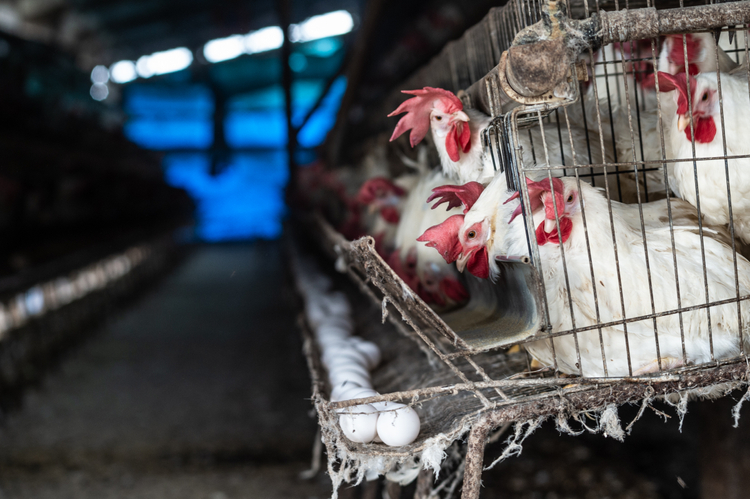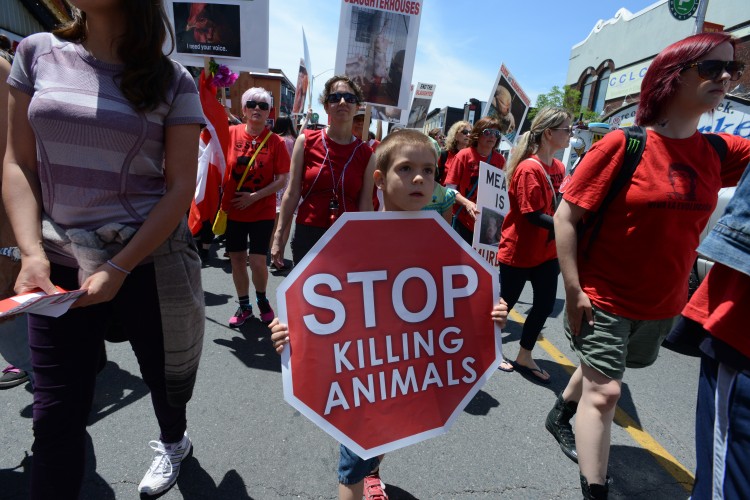It can be difficult to know how to talk to children about issues that are graphic or otherwise age-inappropriate in reality. This can feel especially touchy with issues of animal exploitation and abuse; while most of us would want to make sure children are aware of the need to protect animals, witnessing the things animals withstand can be traumatizing even to adults. So how can we introduce these issues to children in ways that interest them and don’t leave them with nightmares?
Children’s books can be one way to start this conversation. I first became interested in veganism and animal rights when I read the book Kids Can Save the Animals, so I know firsthand that this can be an effective format. Activist Clare Druce has turned the subject of intensive chicken farming into a children’s adventure story with her book Minny’s Dream. Druce was able to turn her experience with activism and expertise about the horrors of factory farming into a story that is equal parts educational and entertaining, and even includes some direct action on the part of the main character, a young girl named Paula.
In an interview with Clare Druce, we discussed Minny’s Dream, her activism background, and her thoughts on how to reach young people with messages about protecting animals.
Dylan Forest: What is your background, and how did it lead you to write a children’s book about chicken farming?
Clare Druce: My background is in music; I taught the clarinet for quite a few years. Then one day a book changed my life. In the late 1960s I came across Animal Machines, by the late Ruth Harrison, published in 1964. In it Ruth exposed the dreadful deprivations endured by our farmed animals, laying bare the horrors of factory farming. I lent the book to my mother, Violet Spalding, and she too was shocked. We decided to write letters to the welfare department of the then Ministry of Food and Farming (MAFF) believing (briefly, as it turned out!) in the power of the pen. Soon, we realized we were getting nowhere, just receiving endless replies telling us that all was well, that the UK had the highest standards and the best legislation in the world.
After a year or so of this we decided some direct action was called for. From a butcher’s shop in London’s East End we bought some live “spent” hens, pathetic but typical victims of a year in battery cages. The next day we took them to MAFF’s welfare headquarters, bluffing our way into the building, along with a reporter and photographer from the local newspaper, who were taken to be part of the demonstration. A veterinarian and another official were forced to listen to us and though no obvious progress was made, very good publicity followed. For a long time my mother and I, joined by many supporters, campaigned exclusively against the battery cage system, which, when our campaign started, accounted for around 95% of all UK egg production.

I feel passionately about cruelty to all animals, but the plight of caged hens is so dire, and something I got to know such a lot about. Those two things account for why I eventually chose to write Minny’s Dream.
Why the focus in particular on chickens? What draws you to them as a species in need of protection?
For a long time battery hens remained our only target. Fifty million battery hens in the UK alone felt enough for a start! (In Minny’s Dream, Minny, who is a talking chicken living in a battery cage, objects fiercely to being called a battery hen, but I’ll use the term here for shorthand.) Very soon we found we’d made a sensible choice. We found we could buy so called end-of-lay battery hens quite easily, mainly by talking our way into battery farms, or going to farmers’ markets, and small and squalid farms we discovered. Most farmers thought nothing of inviting us into their premises to choose our four or five hens, and this way we learnt a lot about the true horrors of the cage system. It also gave us opportunities to keep the hens until they were fit enough to be passed on to guaranteed good homes. Some we kept, and proved an education in themselves, as we watched them return to their natural behavioral patterns. I remember one little hen especially: as soon as we got home we put her down, with three others, on our lawn. After a year in a cage she was too weak to stand and fell over straight away, but nevertheless, still lying on her side, she immediately started to peck at the grass. I found this touching, and infinitely sad.
It was years before we fully realized the plight of young chickens, those killed when they are around six weeks old. In my 2013 book Chickens’ Lib, I describe how we ended up campaigning for all poultry, from quail to ostriches, and to a lesser extent for all factory-farmed animals.
Why do you think it’s important to talk to children and young people about animal abuse in farming and our food system?
I think it’s important because, despite all the decades of campaigning by a growing number of pressure groups, there’s still nothing like enough awareness of what really goes on down on the farm.
Writing a book for children seemed just one way of alerting children to the cruelty of cages. There is a big move towards veganism happening now, especially among the young, so that’s very encouraging. Unfortunately most children are still bombarded with highly misleading and inappropriate advertising, and never question where their food comes from.

I remember very vividly when I first saw explicit images and descriptions of the realities of factory farming, which was when I was still a child. While it changed my mind about eating animal products immediately, it was also traumatizing and certainly not age-appropriate. Your book is one example of how these disturbing truths can be communicated to kids. What is your strategy for making this subject digestible for children?
Well, I tried to make Minny’s Dream into an exciting adventure story. I do think there’s a degree of risk in telling young children too much. I tried to avoid doing this, while expressing, through her own words, Minny’s terrible deprivation. I wouldn’t recommend it to readers under nine years old or so (bearing in mind that children vary a lot). I think I’ve succeeded in making Minny into quite an interesting and strong-minded character. Through her, readers learn a lot about the battery system and, through her dreams, about hens’ natural behavior too. And of course it has a very happy ending, including for the badly treated guard dog!
Unfortunately a lot of young people who might not want to support the suffering of animals or consume animal products have little to no control over what foods their household buys and eats, and may have parents who are outright hostile towards veganism or animal rights. What would your advice be to a young person in this situation?
Well, it’s obviously best if fights are avoided. If a young person does come up against serious opposition, perhaps he or she should offer to take an interest in plant-based alternatives to meat and even offer to cook for themselves. Also, it’s good to gather information about nutrition and to reassure parents that they’ll be eating properly, and have the information ready to back up their claims. In my experience a lot of families seem willing to accept their kids’ ideas, and will provide an alternative to meat without too much fuss. Having vegetarian or vegan dishes in the freezer is a good idea, to save cooking at every mealtime.
How can kids who read your book and want to get involved make a difference for chickens and other animals exploited by our food system?
There are now so many organizations that are effective and active, while definitely non-violent. Some sanctuaries encourage supporters to “adopt” an animal and will send information about the animal’s life and progress. This would be a way of finding out about the realities of intensive farming while doing something positive to help.
Maybe some children would feel able to talk to their teachers, and suggest discussions and debates in school. Writing letters to companies expressing concerns about their products is also a good idea, as long as the letter is polite. Many organizations have children’s “corners” in their magazines, or have materials specifically for children available upon request.
Featured image: a young girl kisses a cow at Farm Sanctuary. Image credit Jo-Anne McArthur / We Animals.





